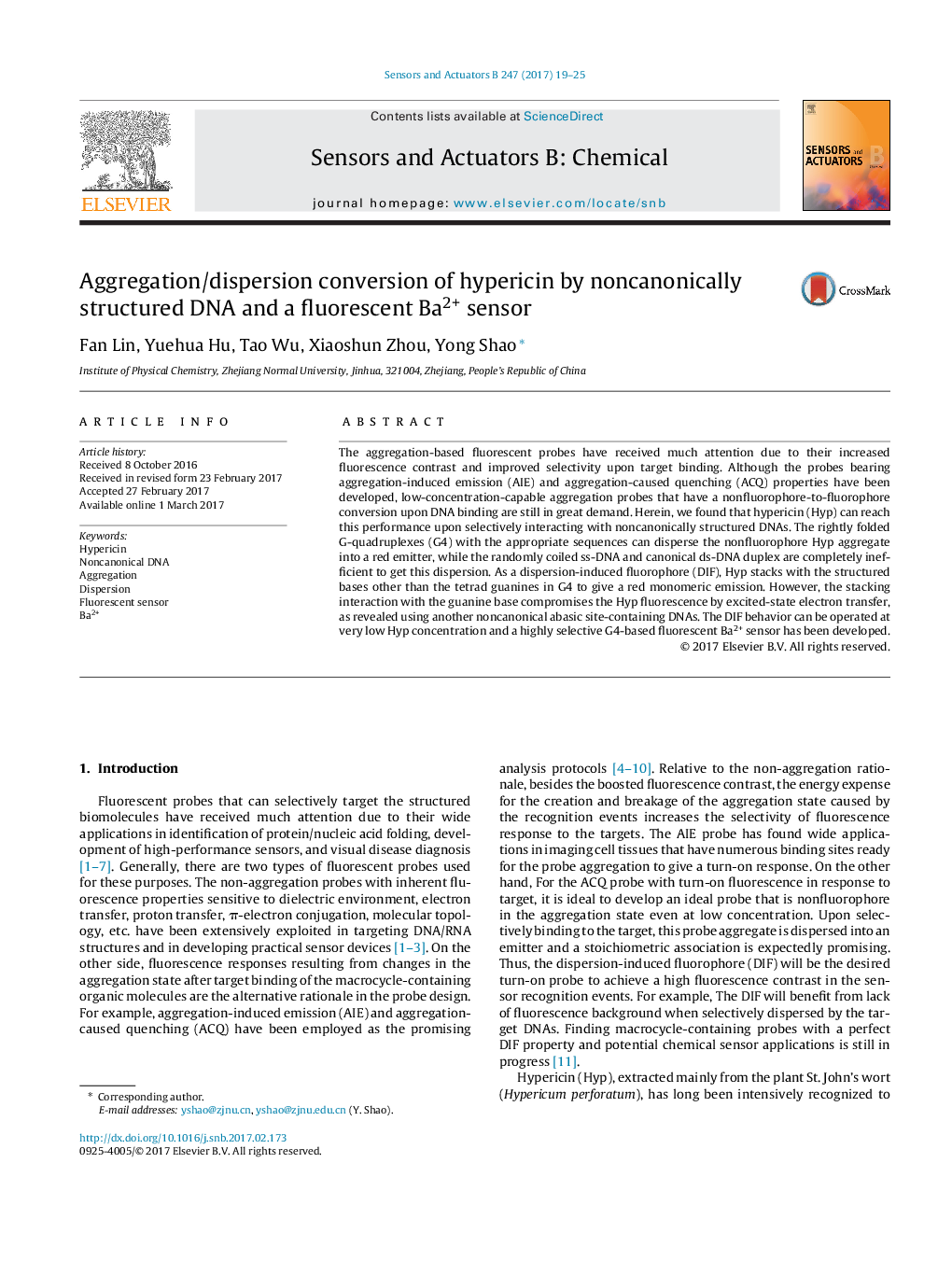| Article ID | Journal | Published Year | Pages | File Type |
|---|---|---|---|---|
| 5009342 | Sensors and Actuators B: Chemical | 2017 | 7 Pages |
â¢Hypericin aggregate can be dispersed into a red emitter by noncanonically structured DNAs.â¢Dispersion-induced fluorophore is DNA sequence dependent and the stacking interaction with bases other than guanine lights up hypericin.â¢A selective Ba2+ sensor is first developed.
The aggregation-based fluorescent probes have received much attention due to their increased fluorescence contrast and improved selectivity upon target binding. Although the probes bearing aggregation-induced emission (AIE) and aggregation-caused quenching (ACQ) properties have been developed, low-concentration-capable aggregation probes that have a nonfluorophore-to-fluorophore conversion upon DNA binding are still in great demand. Herein, we found that hypericin (Hyp) can reach this performance upon selectively interacting with noncanonically structured DNAs. The rightly folded G-quadruplexes (G4) with the appropriate sequences can disperse the nonfluorophore Hyp aggregate into a red emitter, while the randomly coiled ss-DNA and canonical ds-DNA duplex are completely inefficient to get this dispersion. As a dispersion-induced fluorophore (DIF), Hyp stacks with the structured bases other than the tetrad guanines in G4 to give a red monomeric emission. However, the stacking interaction with the guanine base compromises the Hyp fluorescence by excited-state electron transfer, as revealed using another noncanonical abasic site-containing DNAs. The DIF behavior can be operated at very low Hyp concentration and a highly selective G4-based fluorescent Ba2+ sensor has been developed.
